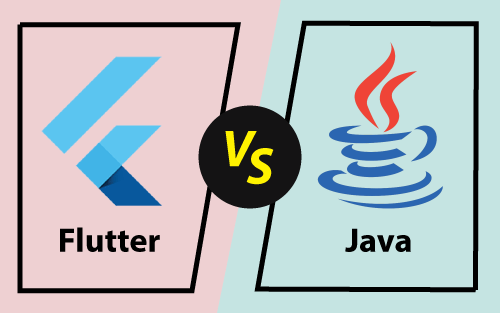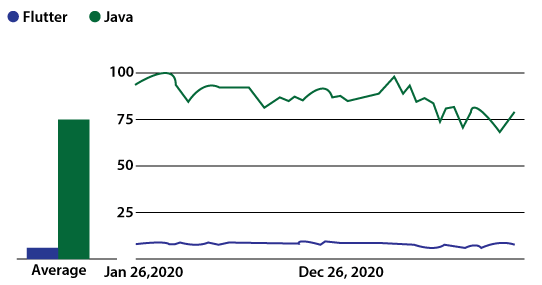Flutter vs JavaFlutter and Java are both used for developing cross-platform applications. Flutter is a cross-platform mobile framework from Google. Flutter help developer and designer to build modern mobile application for Android and iOS. Java is one of the widely used object-oriented and class-based programming languages for mobile, web and desktop applications. 
Let's dive into deep in both of them one by one to understand the difference between both of them. FlutterDesigning the mobile app is a very challenging task. There are several frameworks available to design the mobile app. A rich set of features are provided by these frameworks. The native framework provided by Android is based on Java and Kotlin language. The framework provided by iOS is based on the Objective-C/Swift language. Now, it is clear that we require two different languages with frameworks to develop a mobile app for both operating systems. To overcome this problem, we have several cross-platform development tools or frameworks that are able to develop a mobile app for both operating systems. By using these frameworks, we can write code once and can deploy it on various platforms like Android, iOS, and Desktop. Ionic, PhoneGap, Xamarin, and React Native are some of the frameworks of the cross-platform development family. Flutter is a new cross-platform framework developed by Google. In order to create a beautiful and fast application for web, desktop and mobile using a single language and codebase, the use of flutter is growing day by day. It is a free and open-source framework or tool which is currently maintained by ECMA standard. Dart programming language is used by the flutter for developing applications. Dart programming has the same features as Kotlin and Swift and can be trans-compiled into JavaScript code. Pros
Cons
JavaJava is one of the widely used, class-based, and object-oriented programming language developed by Sun Microsystems in 1995. It provides a rich set of libraries that are used to developed mobile, web and desktop applications. Java is very easy to learn and understand. It is a platform-independent language and secures using a virtual machine. Java programming language is suitable to develop not only the Desktop application but also Mobile and Web applications too. Pros
Cons
Difference Between Flutter and JavaFlutter is a "Cross-Platform Mobile Development" tool and Java is a "Language". Based on these two factors, we can differentiate both. Let's understand the key difference between Flutter and Java.
Let's understand the tools that are integrated with Flutter and Java both.
Use of Flutter and Java
Next TopicPermutation of Numbers in Java
|
 For Videos Join Our Youtube Channel: Join Now
For Videos Join Our Youtube Channel: Join Now
Feedback
- Send your Feedback to [email protected]
Help Others, Please Share










